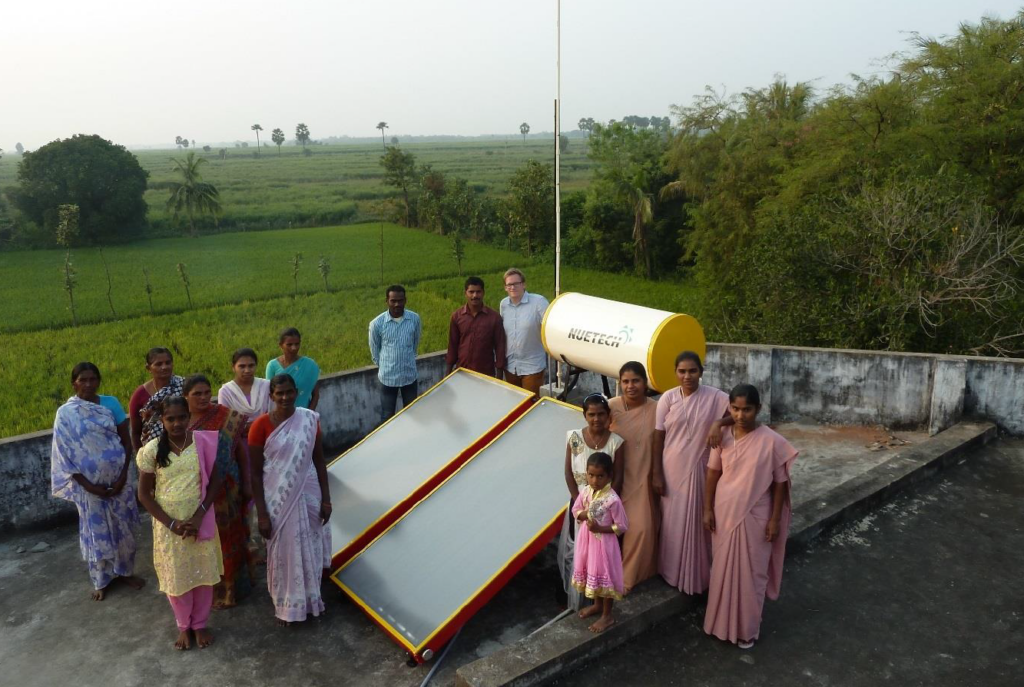2016
Project Overview
Engineers Without Borders Luxembourg successfully installed a solar water heating (SWH) system at St. Joseph Convent in Peddakorukondi, India, from November 5-13, 2016. This project, aimed at providing a sustainable hot water solution, included installation phases, personal experiences, and evaluations, with conclusions for future projects.

Convent Infrastructure
The St. Joseph Convent encompasses a hospital, sisters’ residence, children’s house, sheds, garage, courtyard, garden, and a rice field. The water supply is managed by rooftop tanks filled daily via a bore well pump, and hot water is crucial for cooking and bathing for most of the year.
System Setup
The SWH system components, delivered from Bangalore, included solar panels, a 150-liter solar tank, and necessary pipework materials. Despite minor damages during transport, the setup proceeded with the panels secured at optimal angles, the tank connected with flexible hoses, and an air-vent pipe installed to prevent system damage.
Material Procurement and Tank Installation
Essential materials were sourced from Kallur, with a focus on durability. The supply tank was installed on the sisters’ building’s staircase roof, ensuring a constant water supply to the solar tank.
Piping and System Operation
Three hot water taps were installed in the kitchen, outside the children’s house, and on the sisters’ building’s first floor. The piping work involved significant labor and minor wall modifications. Leakages were addressed promptly, and an electrical backup heater was connected for additional heating when necessary.
Temperature Measurements
Initial temperature measurements indicated satisfactory performance under less optimal winter sun conditions. Further measurements are planned to evaluate system performance during peak solar months.
Additional Lighting
Solar-LED floodlights were installed to enhance safety and visibility around the convent at night, especially in snake-prone areas. The lights, equipped with motion sensors, were strategically placed to maximize illumination and security.


